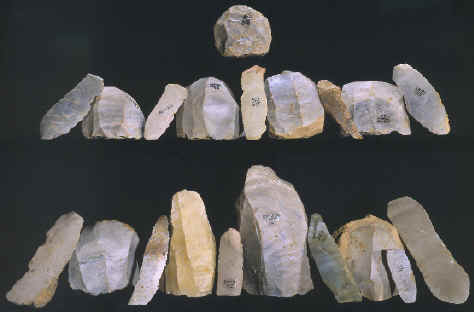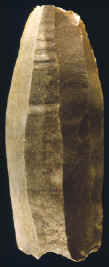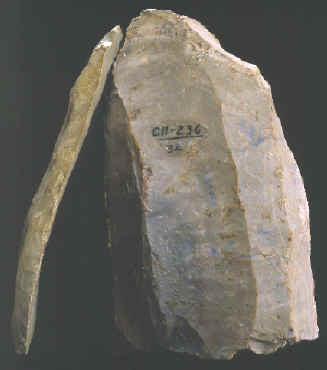|
Europe's Aurignacian and North America's Clovis cultures both used a highly developed core & blade technology. Some people believe there may be a connection between the two and that the Clovis stone tool tradition should originate from the Upper Paleolithic in Siberia. At present the generally accepted theory is that Clovis people came into North America from Siberia across the exposed land bridge. It's logical to assume that this was how they arrived but there is still no solid evidence that conclusively pins it down. |
|
There have been isolated artifact finds in Siberia that are, thought to be by some archaeologists, suggestive of Clovis technology. One of these finds is the "Uptar fluted point" from the site of Uptar in northeastern Siberia. This bifacially flaked projectile point or knife has a single flake that removed nearly all of one side. It's both unique and controversial. Other points were also found at Uptar but none were fluted. The true date of this site is unknown except for an overlaying volcanic level that is 8,300 years old. |
|
Archaeological research on Upper Paleolithic sites in eastern Siberia is an ongoing endeavor. Archaeologists are still trying to obtain a better understanding of cultural traditions in this region just before North America's first peopling event. At this time there are still no diagnostically similar Clovis projectile points or knives turning up on any Siberian excavations, at least nothing that is generally accepted. It may take a few more years before scientists can gather enough evidence that will either prove or disprove a link with Clovis and Upper Paleolithic Siberia. The jury is still out. |
| CONTINUE ON TO PAGE TWO |
|
"REFERENCES"
1988, "Encyclopedia of Human Evolution & Prehistory," by Ian
Tattersall, Eric Delson & John Van Couvering. |




